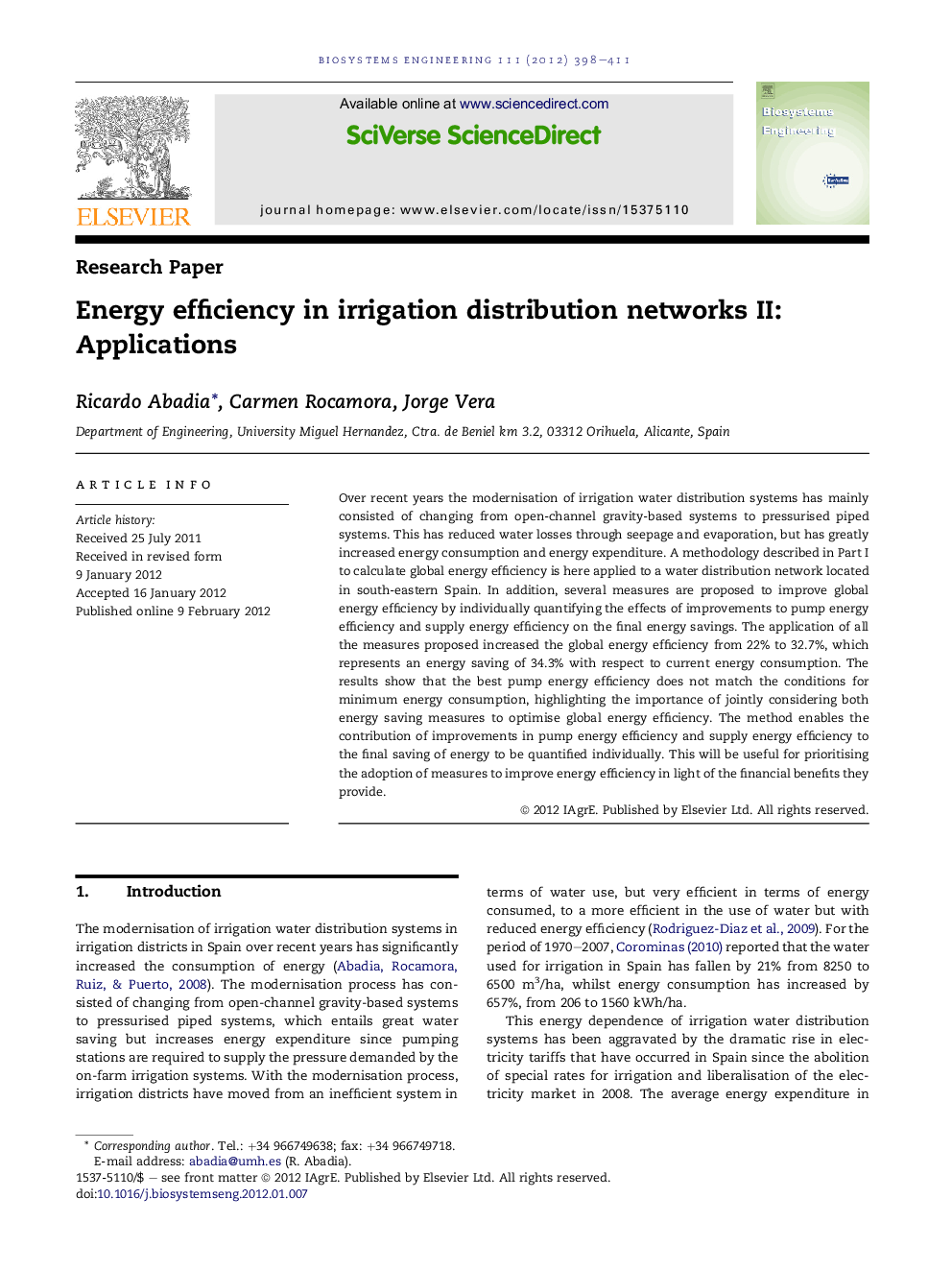| Article ID | Journal | Published Year | Pages | File Type |
|---|---|---|---|---|
| 1711529 | Biosystems Engineering | 2012 | 14 Pages |
Over recent years the modernisation of irrigation water distribution systems has mainly consisted of changing from open-channel gravity-based systems to pressurised piped systems. This has reduced water losses through seepage and evaporation, but has greatly increased energy consumption and energy expenditure. A methodology described in Part I to calculate global energy efficiency is here applied to a water distribution network located in south-eastern Spain. In addition, several measures are proposed to improve global energy efficiency by individually quantifying the effects of improvements to pump energy efficiency and supply energy efficiency on the final energy savings. The application of all the measures proposed increased the global energy efficiency from 22% to 32.7%, which represents an energy saving of 34.3% with respect to current energy consumption. The results show that the best pump energy efficiency does not match the conditions for minimum energy consumption, highlighting the importance of jointly considering both energy saving measures to optimise global energy efficiency. The method enables the contribution of improvements in pump energy efficiency and supply energy efficiency to the final saving of energy to be quantified individually. This will be useful for prioritising the adoption of measures to improve energy efficiency in light of the financial benefits they provide.
► Global energy efficiency (GEE) calculated using methodology of part I. ► GEE composed of pump energy efficiency (PEE) and supply energy efficiency (SEE). ► GEE optimisation was best achieved by simultaneously improving PEE and SEE. ► Important to independently quantify improvements to prioritise improvement measures.
